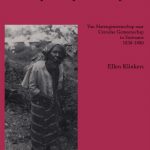Ilse Roodnat – Social Housing South Africa: A Research On The Niche Area Sunnyside, Pretoria.
No comments yetHBO-Kennisbank, 2007 – The housing problems in South Africa are immense. The country copes with a huge housing backlog, especially in the urban areas in the low-income sector. Because of the apartheid spatial planning, where black people were not allowed to live in cities, the structure of South African cities and the area around it have developed a complex spatial structure which is difficult to break through. When the Apartheid era ended groups of oppressed black people started moving into the cities. This phenomenon was known under the white inhabitants of South Africa as the black threat, and in fear of a civil war the white inhabitants moved out of the cities. For a period of time the situation in the inner cities were critical without supervision, order and evacuated houses and offices crime evolved quikly and the degeneration of the inner cities was inevadable. The new democratic government of 1994 waited a tremendous task of stabilizing the environment to transform the extremely fragmented, complex and racially-based financial and institutional framework inherited from the previous government. By this means the new government focused on the quantity rather than the quality when it came to fighting the huge housing backlog. Over the next ten years the government delivered 1,6 million houses, building as much as possible as soon as possible resulted in more houses outside the cities far away from social and economic opportunities with great transportation difficulties. The new housing delivery did not deviate from the apartheid spatial planning; black townships predominantly stayed black with no possibility of racial integration, located far from economic activity, the low economic activity created extensive poverty, no recreational facilities resulting in deprived, depressed communities with nothing to do and no where to go.
Read more: http://www.hbo-kennisbank.nl/
You May Also Like
Comments
Leave a Reply






